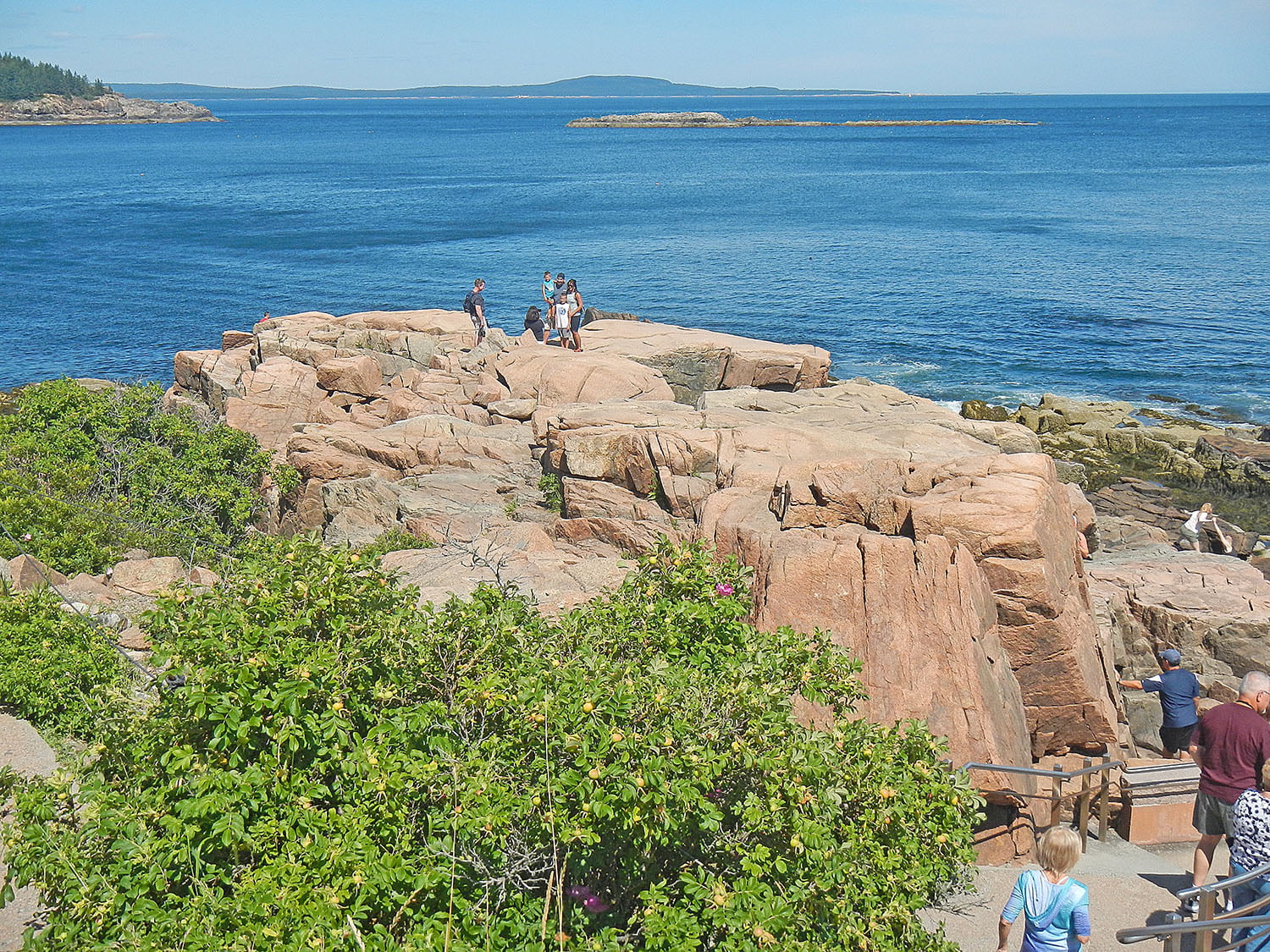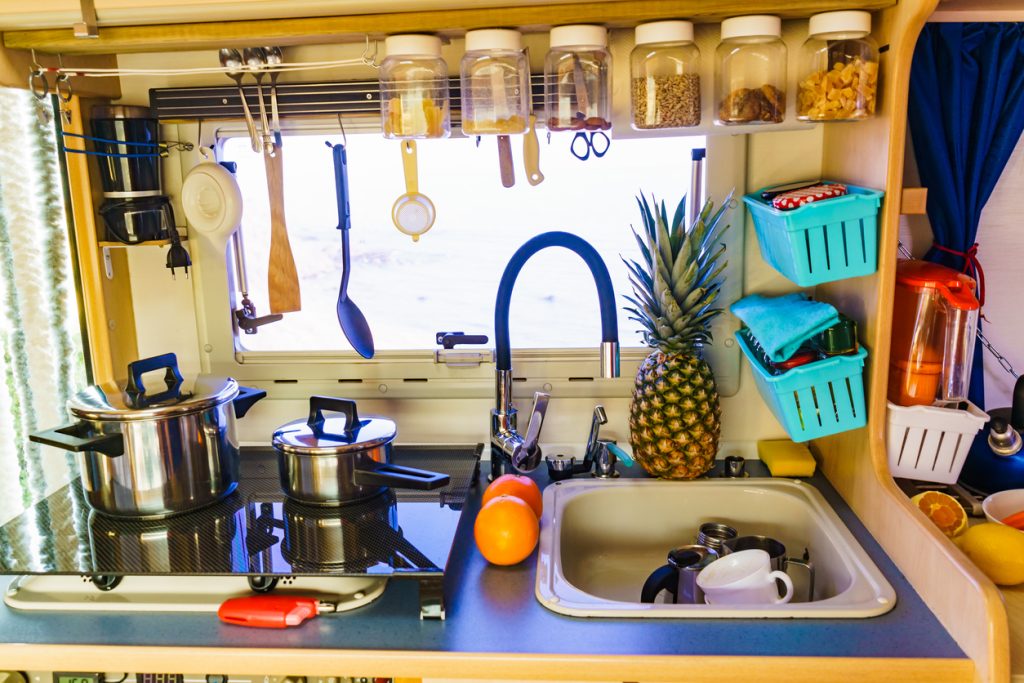Maine doesn’t make you wait long for a scenic view. Within minutes of crossing at Calais—a popular entry point from New Brunswick—we were already pulling over to snap photos of scenic coves, lighthouses, and the powerful Atlantic Ocean.
Maine is a vast New England state, but our RV travels lasered in on the eastern reaches known as Downeast & Acadia. It’s a region for the senses: amazing ice cream, wild blueberries as far as the eye can see, and delights from the sea including clam chowder and lobster dishes. With so many culinary specialities, the small kitchen in our Class B Roadtrek shone—we could pick up ready-to-cook meals to reheat or come from the farmers’ market with local ingredients to add zip to our own recipes.
Roosevelt Campobello International Park
Before getting very far down the Maine coastline, we crossed back to, well, Canada! Doing a little border hopping across a small bridge linking the Maine mainland to a New Brunswick coastal island, took us to a highlight of our travels, the Roosevelt Campobello International Park, a shared parkland that is equally funded by both federal governments.
Roosevelt Campobello International Park is dedicated to the preservation of Campobello, the summer “cottage” and setting cherished by President Franklin D. Roosevelt and his wife, social activist Eleanor Roosevelt. It’s on the small New Brunswick island of Campobello.
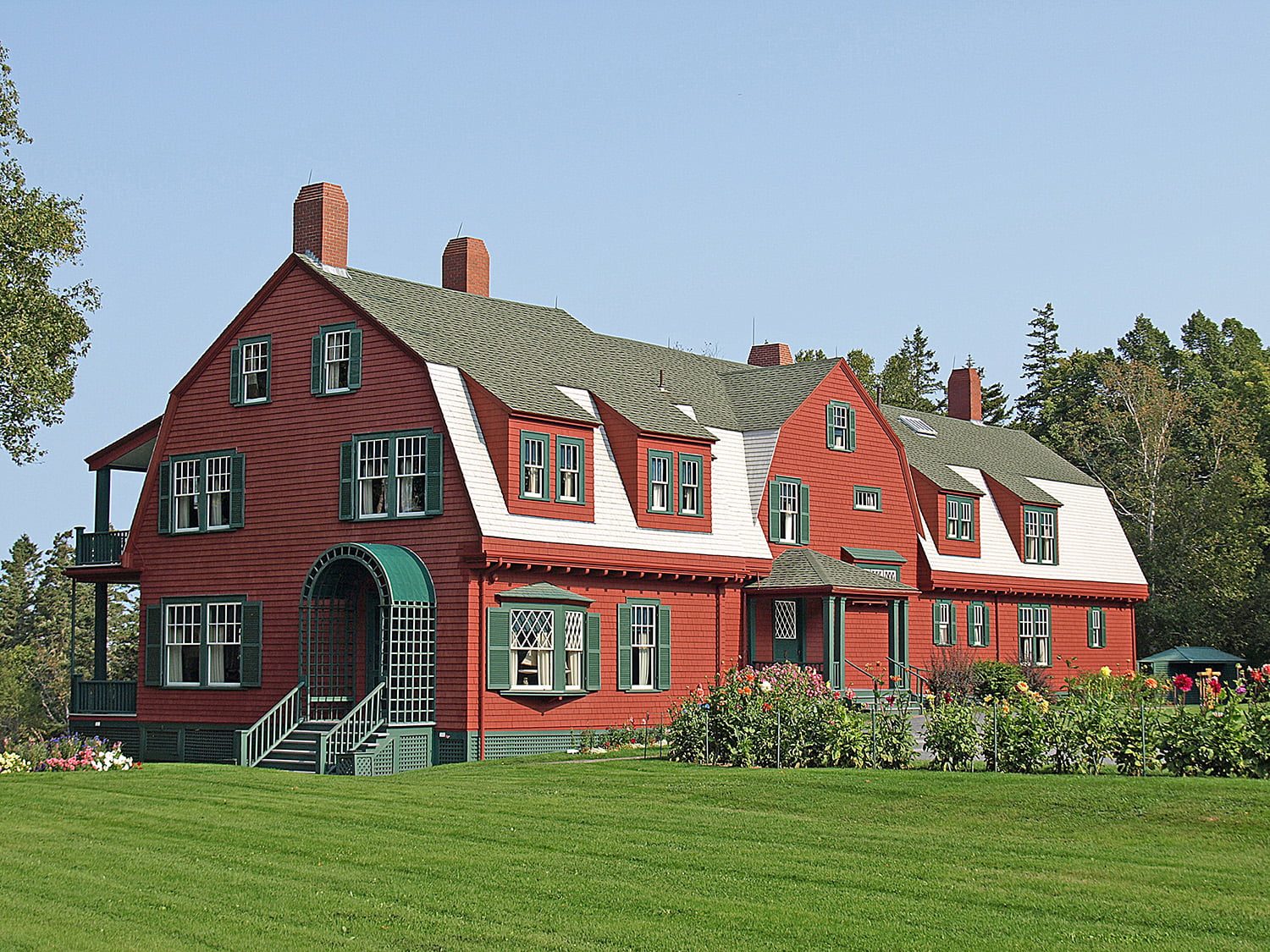
The summer “cottage” and setting cherished by President Franklin D. Roosevelt and his wife, Eleanor Roosevelt is preserved and protected on the small New Brunswick island of Campobello. Operated by both the U.S. and Canada, Roosevelt Campobello International Park is dedicated to the preservation of Campobello, the 34-room (including 18-bedrooms) that was the summer home to the family.
The 34-room Roosevelt Cottage held warm memories for FDR (the longest serving U.S. president). This was the summer home the future president knew as a child—but after his polio diagnosis at age 39 he rarely visited; and he never walked unassisted again. The island property remained a summertime home setting for Eleanor and their five children and was a special place for family and relaxation.
The main cottage has been restored to period, complete with many original furnishings, kerosene lights, and artifacts, including FDR’s trademark hat and pipe. In the spacious living room, FDR would work on his stamp collection, while Eleanor would knit or read.
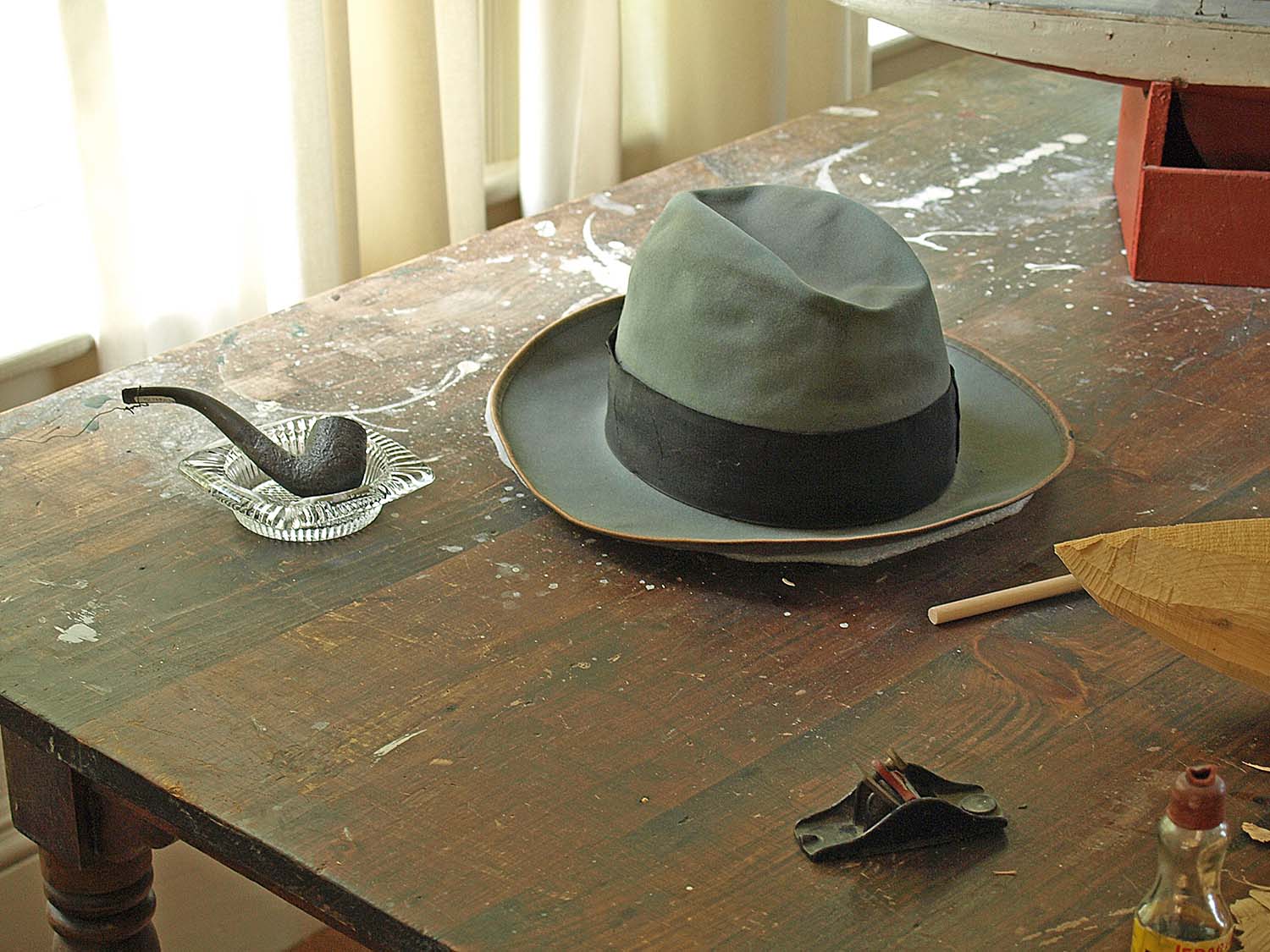
The Roosevelt Cottage on Campobello Island has been restored to period, complete with many original furnishings, kerosene lights, and artifacts, including FDR’s trademark hat and pipe.
In the historic Wells-Shober summer cottage—part of the international park and a short walk from the main cottage—we took an afternoon break for Eleanor’s Tea. The tour of Roosevelt Cottage certainly whets the appetite to learn more about this ground-breaking First Lady. Over cups of orange pekoe tea and plates of ginger snaps, the docents entertained and informed us about the life, beliefs, and greatest accomplishments of this remarkable woman (of which there are many, not least shepherding the 1948 Universal Declaration of Human Rights).

Eleanor’s Tea is held in the historic Wells-Shober summer cottage—part of the Campobello International Park. At the tea, visitors learn more about the life and accomplishments of the First Lady, Eleanor Roosevelt.
West Quoddy Head Lighthouse
Crossing back to the mainland, we stopped near Lubec at the candy cane-striped West Quoddy Head Lighthouse, marking the most-easterly point of the United States. The lightstation warns mariners of the area’s dangerous cliffs and rock ledges. In the early 1800s, the lighthouse used a fog bell, then a steam-powered foghorn, and now an automated light that still shines through the original Fresnel lens. There are several hiking trails beginning at the parking lot, with sweeping views across the channel to the red cliffs of New Brunswick’s Grand Manan Island. Wildlife watchers may spot seals, porpoises or the occasional humpback whale offshore. The Bog Trail winds through a unique habitat, home to flora like black spruce, sheep laurel, and reindeer moss that can tolerate the cool temperatures, wind, fog, and boggy soils. It’s a scenic spot to picnic; no camping is allowed at the site, but Cobscook Bay State Park is a half-hour drive and has 106 campsites, comfort stations with showers, and an RV dump station.
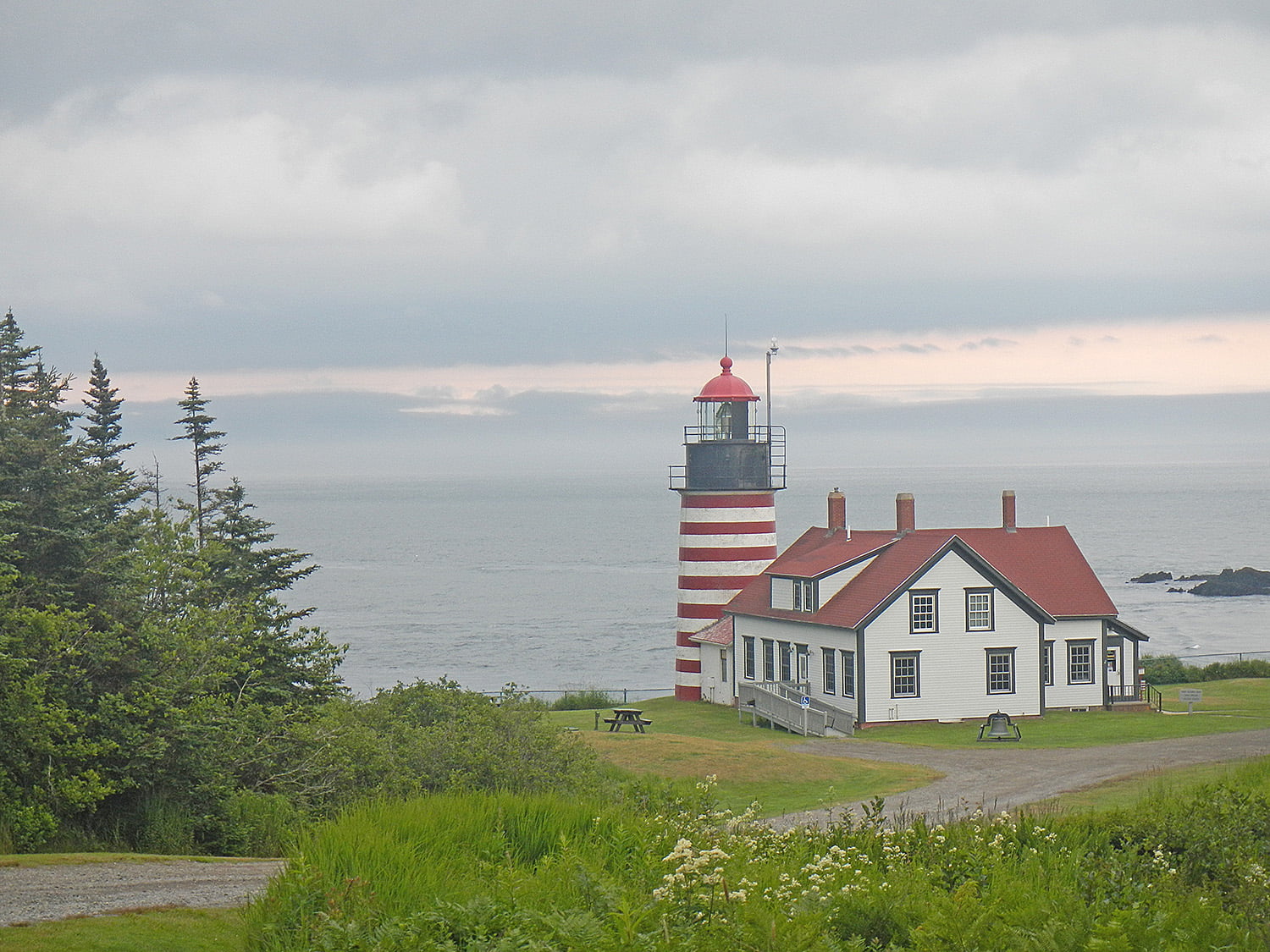
The candy cane-striped West Quoddy Head Lighthouse, marks the most-easterly point of the United States.
Cohill’s Inn
On the way, it’s worth a stop at Cohill’s Inn in Lubec—“the Eastern most pub and inn”—located right on the Bay of Fundy, with a pub-style menu made from the best ingredients sourced from local farmers and fishers.
We zigged and zagged along coastal Highway 1, stopping to take photos at the pretty fishing village of Cutler, until the turnoff for a few other Maine highlights, Bar Harbor and Acadia National Park.
Bar Harbor
The historic town of Bar Harbor is very busy during the peak summer months, so best to plan ahead for both campsites and parking spots (especially for larger rigs). The small streets are lined with ice cream shops and eateries with lobster and clam chowder at the top of the menus. On the outskirts of town there are many lobster pounds, casual eateries specializing in all dishes lobster. In town, right by the scenic harbour, I indulged in a creamy New England-style chowder and twin lobster tails at Galyn’s, a Bar Harbor institution set in a building dating back to the 1890s that served as a boarding house for seafarers, and an illegal speakeasy during Prohibition. Although there aren’t any family stands in town, many grocery stores carry our favourite dessert, Gifford’s Ice Cream, a Maine institution. Claiming a million cones scooped each summer, Gifford’s is family-owned, and has a menu of more than two dozen flavours, including Maine wild blueberry, moose tracks, and banana cream pie. Gifford’s is one reason we celebrate the freezer in our RV.

Maine has many ice cream shops, but family-owned Gifford’s Ice Cream is a Maine institution, offering more than two dozen flavours.
In a quiet section of town is the excellent Abbe Museum, a Smithsonian affiliate focusing on the history and ever-evolving culture of the Wabanaki nations. The museum is filled with art and archaeological displays, telling the story from a “decolonized” perspective—created with the Indigenous communities and minimizing the European colonial effect. There are ash-splint and sweetgrass baskets, birchbark containers, and exhibits that speak to the importance of storytellers who are the keepers of history, tradition, and knowledge passed down from one generation to the next.
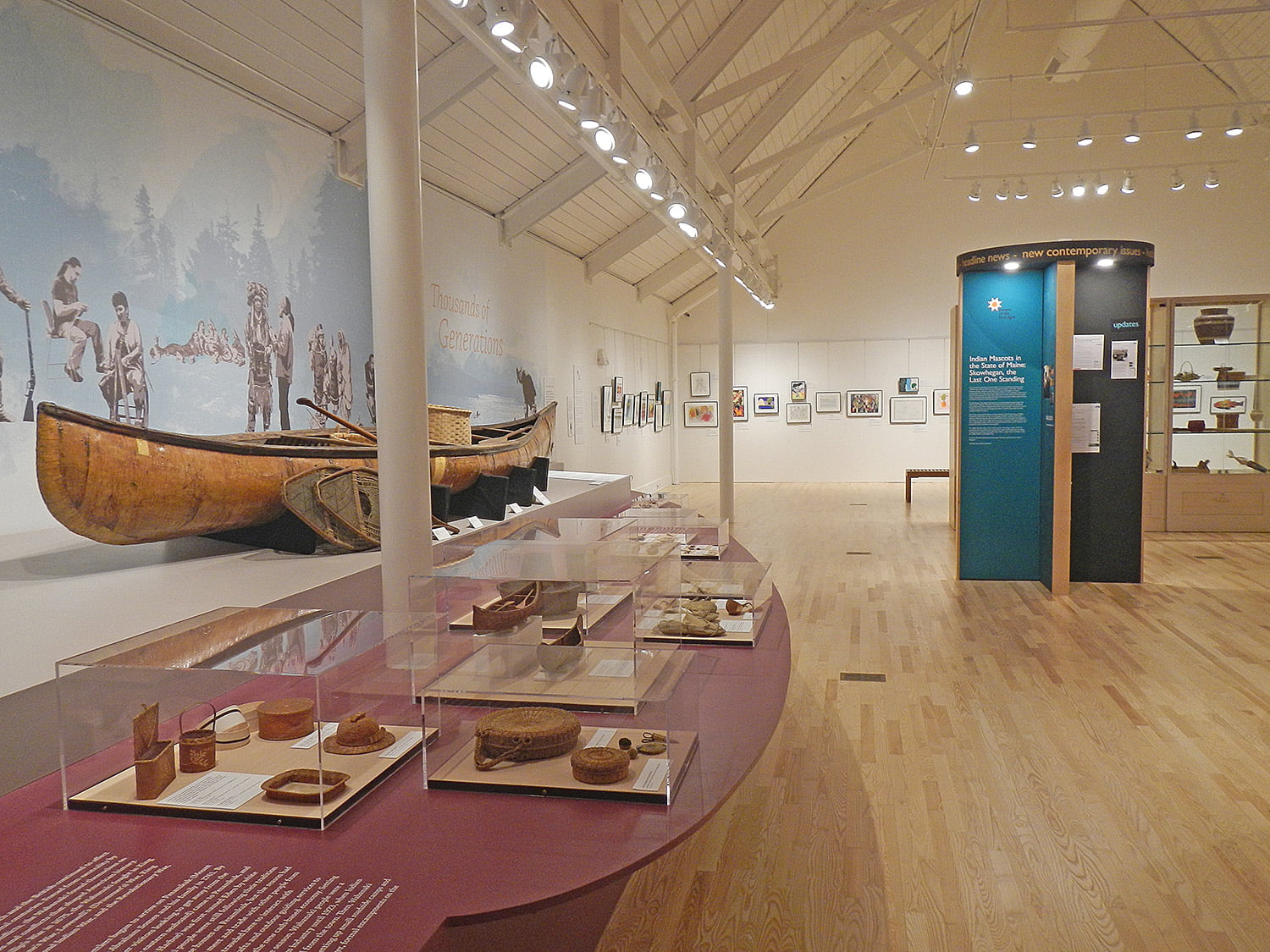
The Abbe Museum tells the history of the ever-evolving culture of the Wabanaki nations.
Wanting to get onto the water, we headed for the harbour and took an excellent two-hour tour with Lulu Lobster Boat. Captain John was a wealth of knowledge about “all things lobster”: lobsters love rocks, so traps are placed in rocky areas and fisherman use sonar to keep track; each lobster fisherman is allowed to have up to 800 traps, but just one licence per boat; how most lobsters are caught within just a few miles of the coastline; and that modern-day traps are now biodegradable by law.

The Lulu Lobster Boat provides two-hour tours of the tradition and economy of lobster fishing in Maine.
“Off the coast of Maine in summer, there are more than three million traps in the water at a time,” he explained. “And when they’re biting in peak season, you should bring in six-to-10 pounds per trap, per day.” With a smile, he added, “Don’t be disappointed if the first few traps come up with nothing. There’s a reason they call it fishing, not catching.”
Acadia National Park
Back on land, we knew we had one more highlight stop to make, Acadia National Park, the first national park east of the Rockies, and one of the National Park Service’s smaller properties but one near the top in visitation. All of Acadia’s parkland was donated by socialite families, many of whom maintained family summer homes in the area, making it unique among national parks. Wealthy families like the Rockefellers built roads and bridges that make parts of the pink granite island accessible. Surrounded by a crown of wild mountains on one side and the powerful ocean on the other, Acadia is an RVers dream and a shining gem of the state.

Acadia National Park is one of smaller parks in the National Park Service, but its craggy shoreline and vistas over the Atlantic Ocean draws many visitors each season.
Visitors come to Acadia in late summer to pick the low-bush Maine wild blueberries (especially along the drive up Cadillac Mountain, a high point along the coastline), and hike the rocky coastline and the many forest trails. In the fall the park’s ash and maples splash the hillsides in red and orange. Overlapping the northern and southern territories of many bird species, the park is a popular birding destination. If Sand Beach looks familiar, it was used as a filming site for movies like Cider House Rules, based on the popular John Irving novel. This beach and landmark coastline stop like Thunder Hole are often busy but reward with stunning views over the clear, blue Atlantic Ocean.
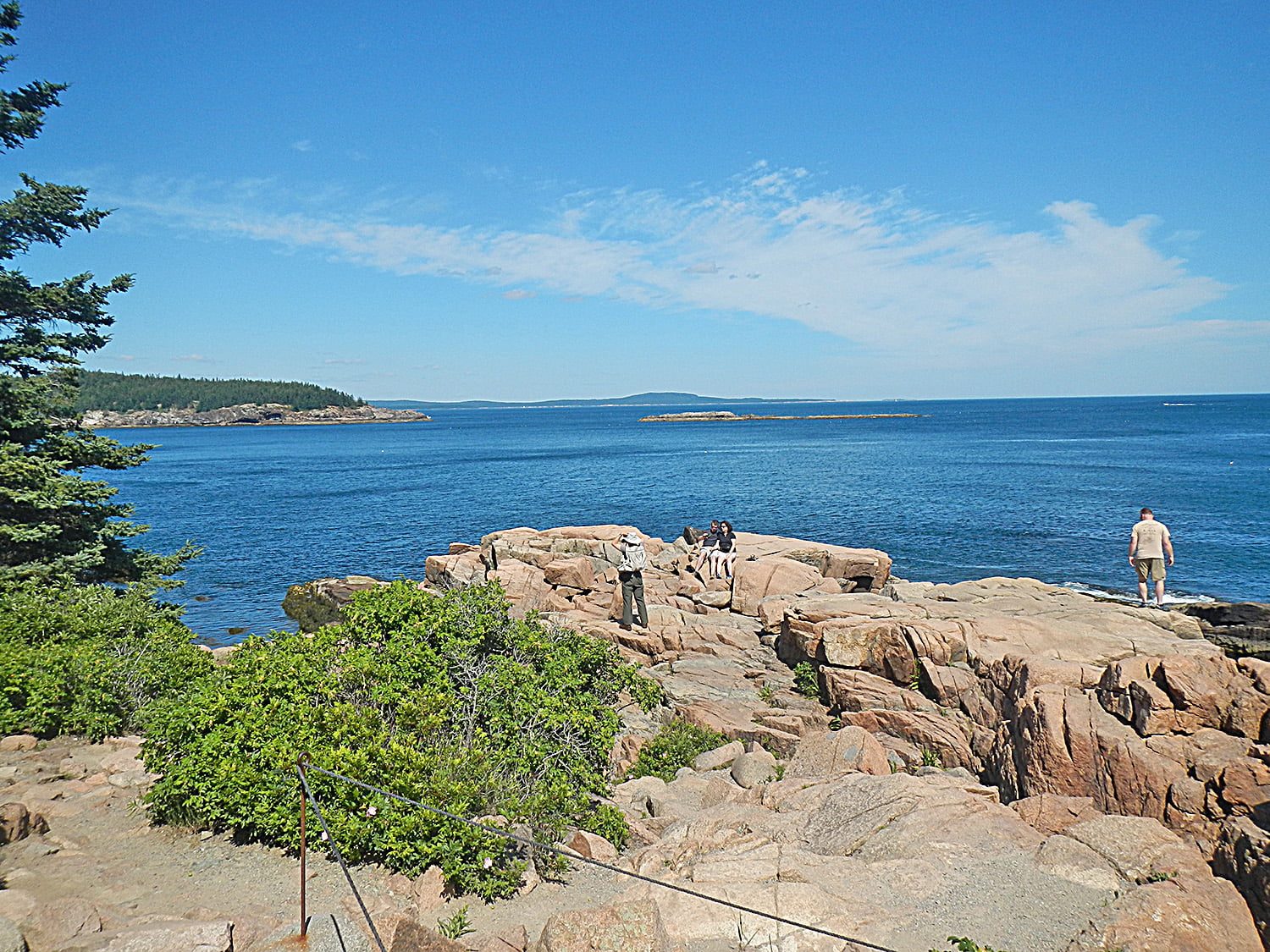
Thunder Hole in Acadia National Park is one of the more popular lookout points and a Maine landmark that encapsulates the power of the ocean.
The park’s three land-accessible campgrounds—Schoodic Woods, Seawall, Blackwoods—will need reservations in summer. Each campground has different facilities but do not count on cell or Internet reception; some have electric hookups, there are dump stations, comfort stations, and most are a short walk to the oceanfront.
This stretch of coastline—Downeast & Acadia—has everything for the three-season traveller. It is a reasonable drive from the Canadian border, it showcases the maritime personality of the churning Atlantic, and it is packed with history from the presidential to that of the lobster industry. If you can, catch a sunrise and reflect on this remarkable display of nature. It’s a showcase of what makes travel by RV so very special.

